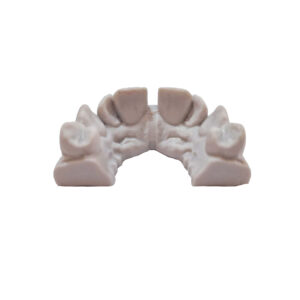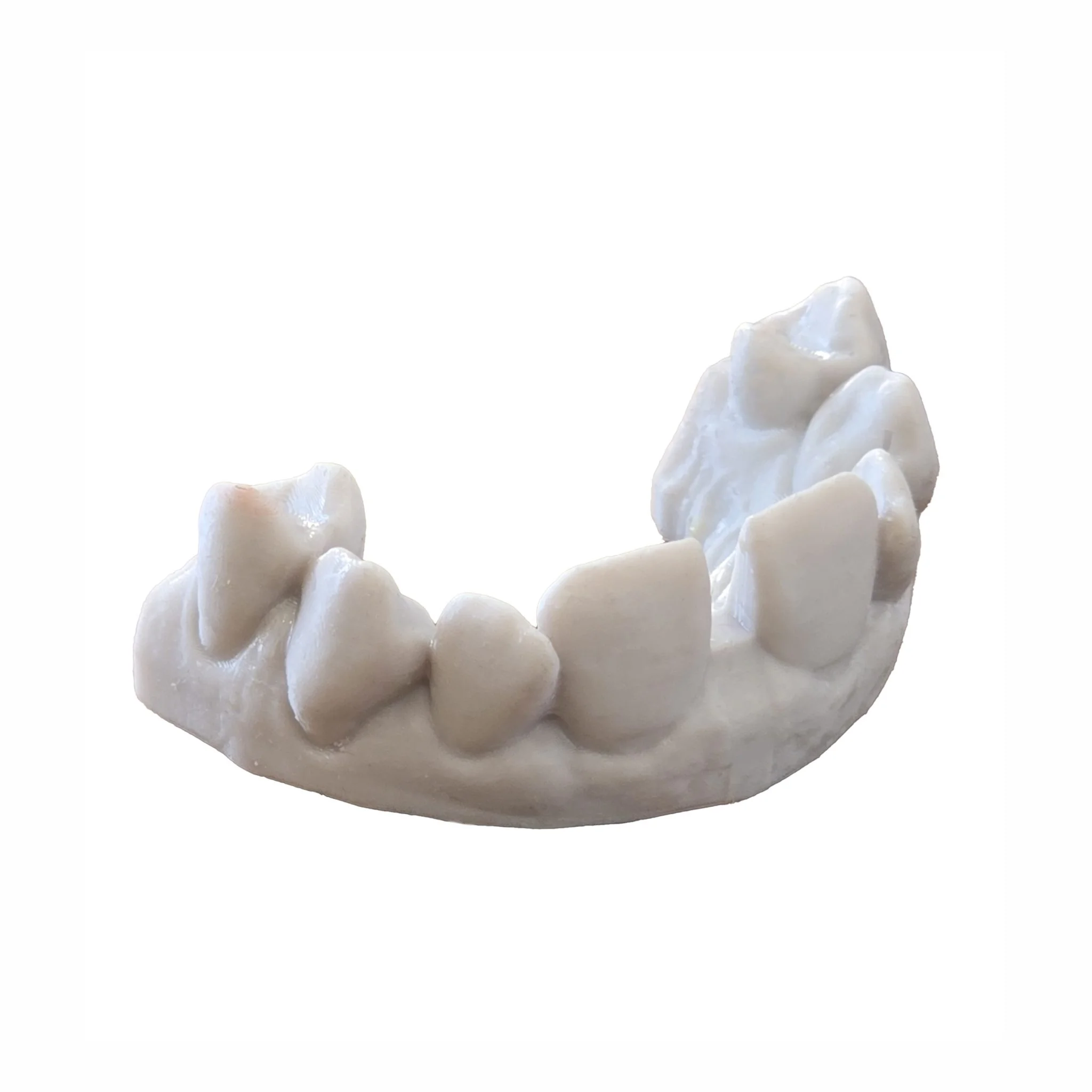Description
Training Arch for Veneers, Diastema & Crowding
-
Midline diastema closure (proportion, contact design, cleansability).
-
Composite veneers (free-hand or template-assisted) including mamelon design and incisal translucency.
-
Additive re-contouring to visually manage mild anterior crowding without orthodontics (for simulation purposes).
The result is a repeatable workflow for diagnostic mock-ups, material handling, and photographic documentation (before/after) under controlled conditions.
Important: Education-only. Do not place intraorally. Clean with mild soap/water or non-solvent wipes; not designed for heat sterilization.
What You Can Practice
-
Case selection logic for diastema closure and additive veneers
-
Control of midline, line angles, width/length ratios, and gingival/incisal zeniths
-
Incremental composite techniques (dentin/enamel masses; value management)
-
Finish & polish to high gloss with discs, rubbers, and paste
-
Standardized photo documentation (cross-polarized/neutral gray for value control)
Specifications
-
Application: Training in composite veneers, diastema closure, and additive contouring (mild crowding)
-
Surface compatibility: Etch → bond → composite placement → finish/polish
-
Material: Hard, polishable resin (for simulation)
-
Variants: Maxillary arch / Mandibular arch / Upper+Lower set
-
Audience: Dental students, general dentists, esthetic instructors
-
Use: Extraoral; simulation only; single-user or course bundle

How to Use Training Arch for Veneers, Diastema & Crowding
-
Prep the model: Rinse, dry; avoid polishing compounds before bonding.
-
Etch: 35–37% phosphoric acid, 15–30 s on enamel (timed practice).
-
Bond: Thin, uniform layer; air-thin; light-cure per IFU.
-
Build-up: Incremental placement; control midline and line angles.
-
Contour: Adjust emergence profile, incisal edge, and width/length ratios.
-
Finish/Polish: Discs → pre-polish rubbers → high-gloss paste.
-
Evaluate: Side lighting + cross-polarized photos; compare with baseline.
FAQ
Q1. How many times can I reuse the arch?
With light contouring and standard polishing, multiple practice cycles are feasible. Heavier reduction shortens useful life.
Q2. Which adhesives/composites can I use?
Compatible with common total-etch and universal systems for simulation. Follow each manufacturer’s instructions.
Q3. Can I autoclave it?
No. It’s not designed for high-temperature sterilization. Surface wipe/soap-and-water cleaning is sufficient for simulation.
Q4. Who is it for?
Dental students, GPs refining esthetic skills, and instructors standardizing anterior esthetics workshops.


Reviews
There are no reviews yet.